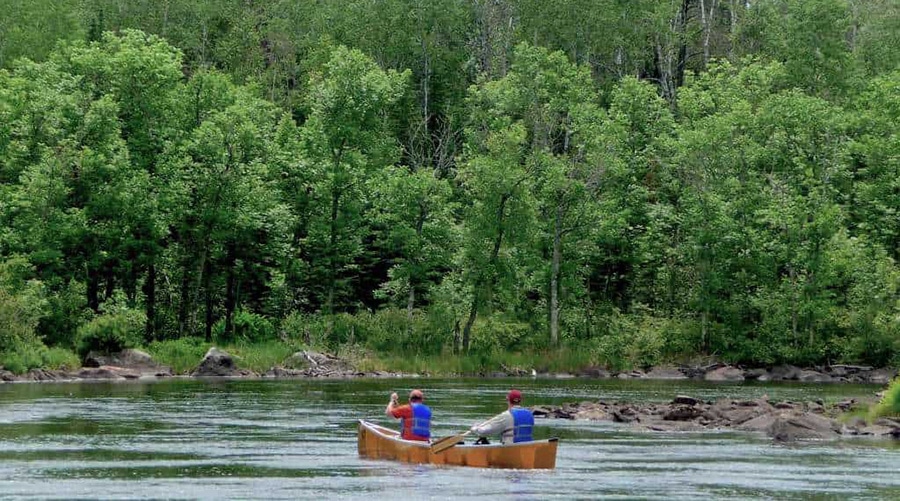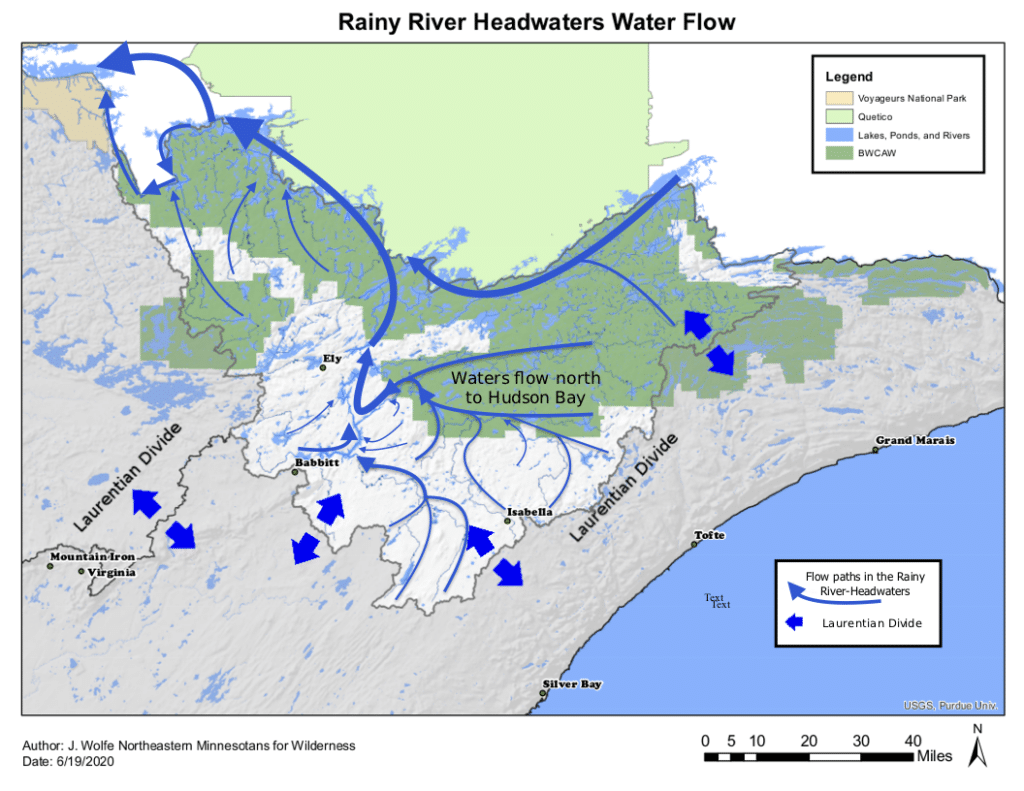
The Minnesota Department of Natural Resources has settled a lawsuit, agreeing to assess if current copper-nickel mining regulations put the Boundary Waters Canoe Area Wilderness at risk.
Northeastern Minnesotans for Wilderness, the group leading the Save the Boundary Waters campaign, filed the suit, and recently reached a settlement calling for a multi-year review — and, hopefully, revisions that would prohibit such risky mines anywhere upstream of the Boundary Waters.
“The Boundary Waters is a national treasure and the cornerstone for tens of thousands of Minnesotans whose livelihoods depend upon a healthy and protected Wilderness,” said Tom Landwehr, Executive Director of the Campaign to Save the Boundary Waters. “State rules and standards are inadequate to protect the Boundary Waters, and the agreement yesterday gives us the opportunity to prove it.”
This form of mining has not been done in Minnesota before, and has an extensive track record of pollution.
Northeastern Minnesotans for Wilderness says its goal for the review is for the state to decide that copper-nickel mining upstream of the Boundary Waters is inappropriate, and prohibit it. That would stop the Twin Metals mine proposal on the South Kawishiwi River, which critics say is too risky to attempt upstream of the BWCAW.
Northeastern Minnesotans pointed to comments by former Forest Service Chief Tom Tidwell about the prospect of mining upstream. While serving as head of the agency, he rejected the renewal of federal mineral leases for Twin Metals, citing “the inherent potential risk” that the proposed mine poses to the Boundary Waters.
Tidwell wrote in a lengthy letter in 2016 that Twin Metals could cause pollution both during and after mine operations, simply because the ore contains sulfides that convert to acid when exposed to air and water.

The rules were developed by the DNR, with input from the mining industry and environmentalists, and finalized in 1993. But no mine has yet operated under the system, and the state and environmentalists have learned a lot about copper mining in the intervening decades. Advocates say the impacts that are permissible in the law are not appropriate in the wilderness watershed.
Any changes to the rules to protect the BWCAW would not likely affect the PolyMet project, in the Lake Superior headwaters, which received permits in 2018.
Before anything changes, a long journey awaits.
A public comment period is expected early next year, followed by a review of the comments and the science that is involved. The agency is required to determine by next fall if the nonferrous mining rules are adequate to protect the Boundary Waters.
If the rules aren’t adequate, the process to change them will begin — unless either Twin Metals or the environmental group requests a court hearing and a judge’s ruling. That will probably happen, and if the court supports a DNR decision to amend the rules, only then will changes be possible.
Northeastern Minnesotans for Wilderness says the lawsuit was the first-ever brought under one section of the Minnesota Environmental Rights Act. By that law, the group was required to prove that allowing copper mining upstream of the Boundary Waters fails to protect the wilderness.
The DNR settled with NMW and agreed to the review process once it determined the group had met that burden of proof.
More information
- MERA Lawsuit Update – Campaign to Save the Boundary Waters
- Minnesota Administrative Rules – Chapter 6132, Nonferrous Metallic Mining
- Minnesota’s Rules Won’t Protect the Boundary Waters – Campaign to Save the Boundary Waters
- DNR, NMW reach agreement to reconsider non-ferrous mining rules – Timberjay

